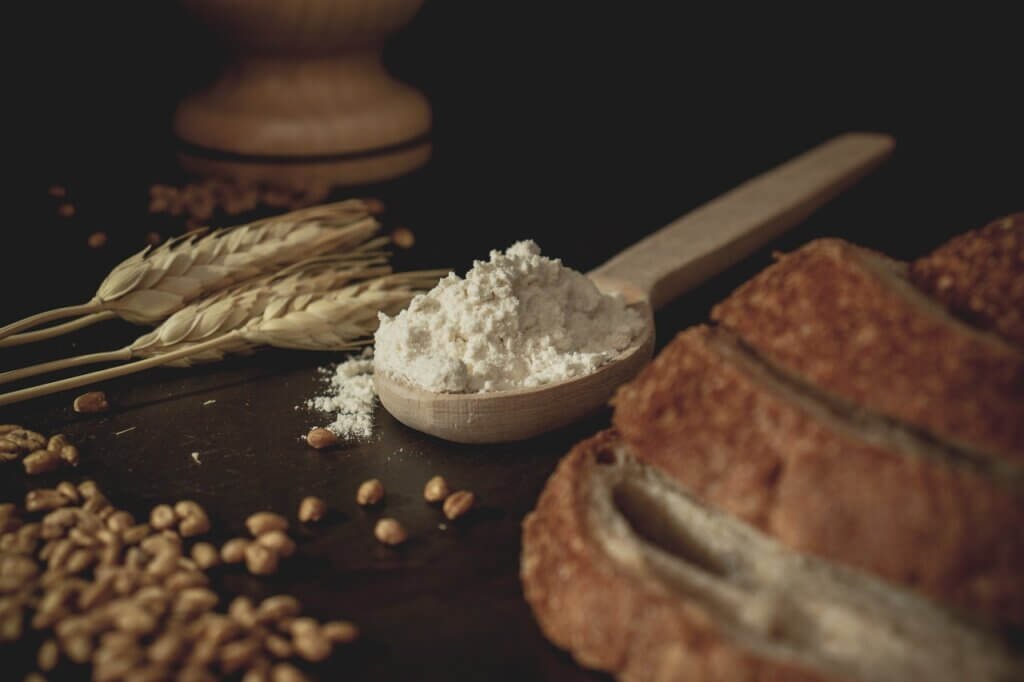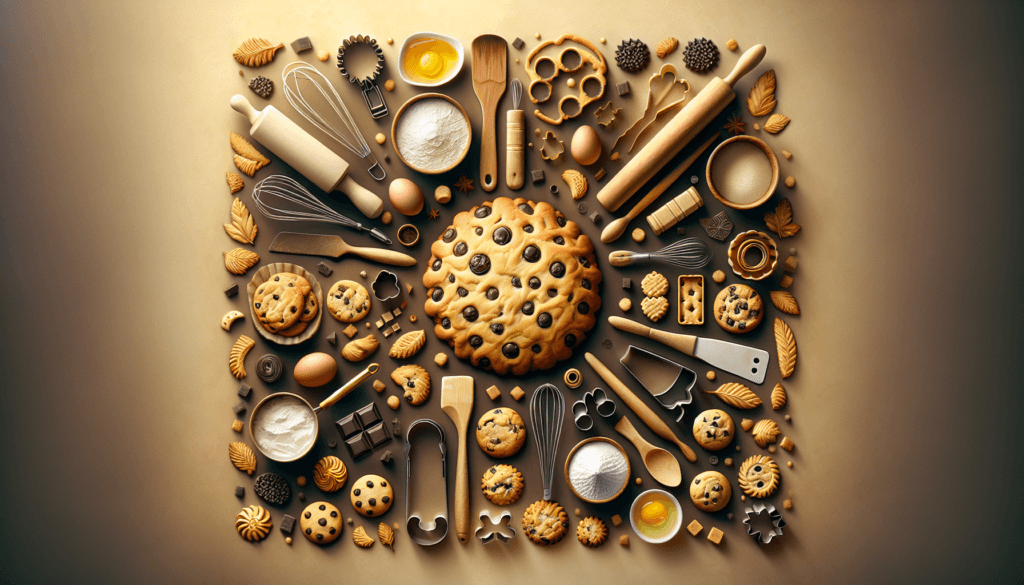If you’re someone who loves indulging in freshly baked cookies but always ends up with disappointing results, fret not! We’ve got you covered with our 10 kitchen hacks that will elevate your cookie game to perfection. From simple tips like using parchment paper to more advanced techniques like chilling the dough, we’ll show you how to achieve that irresistible chewy and gooey center, crispy edges, and mouthwatering aroma that will have everyone begging for your secret recipe. So grab your mixing bowl and spatula, because it’s time to transform your baking skills and become the ultimate cookie master!

Choosing the Right Ingredients
Using high-quality ingredients
When it comes to baking the perfect cookies, using high-quality ingredients is key. This means opting for fresh and organic ingredients whenever possible. Using premium butter and sugar will enhance the flavor and texture of your cookies. It’s also important to choose the best quality flour, as it can make a significant difference in the overall result. Investing in these high-quality ingredients will greatly improve the taste and quality of your homemade cookies.
Measuring accurately
Accurate measurements are essential in baking. A slight variation in the quantity of ingredients can greatly affect the outcome of your cookies. To ensure accurate measurements, it is recommended to use a kitchen scale for dry ingredients. This way, you can precisely measure the required amount of flour, sugar, and other dry ingredients. For liquid ingredients, use a liquid measuring cup with clear markings to get the perfect amount of liquid for your recipe.
Using room temperature ingredients
Using room temperature ingredients is another crucial factor in baking perfect cookies. When butter, eggs, and other dairy products are at room temperature, they blend more easily and evenly into the dough. The result is a smoother and more consistent texture. So, make sure to take out your butter and eggs from the refrigerator ahead of time and let them come to room temperature before you start baking.
Prepping the Dough
Creaming the butter and sugar
Creaming butter and sugar together is a fundamental step in cookie baking. This process helps to aerate the mixture, creating a light and fluffy texture. To achieve the perfect creaming consistency, ensure that your butter is at room temperature. Start by beating the butter on medium speed until it becomes creamy. Then gradually add the sugar, beating until the mixture becomes light and fluffy. This step sets the foundation for a delectable batch of cookies.
Sifting dry ingredients
Sifting dry ingredients may seem like an unnecessary extra step, but it can make a big difference in the quality of your cookies. Sifting helps to remove any lumps or impurities from the flour and other dry ingredients, resulting in a smoother batter. It also helps to evenly distribute ingredients like baking powder or soda and spices throughout the dough. So, before you incorporate your dry ingredients into the dough, take a moment to sift them for better texture and consistency.
Adding mix-ins like chocolate chips or nuts
Adding mix-ins like chocolate chips, nuts, or dried fruits can elevate your cookies to a whole new level. They add texture, flavor, and visual appeal to your baked treats. When adding mix-ins, make sure to evenly distribute them throughout the dough. This way, every bite of your cookie will have a burst of deliciousness. You can also experiment with different combinations of mix-ins to create unique and unforgettable cookie flavors.

Chilling the Dough
Refrigerating the dough
Refrigerating the dough is a crucial step in the cookie baking process. Chilling the dough allows the fat in the butter to solidify, resulting in cookies that spread less during baking. It also enhances the flavor and texture of the cookies, making them chewier and more delicious. To properly chill your dough, wrap it tightly in plastic wrap and refrigerate for at least one hour or up to overnight. This will ensure the best results when it comes to baking your cookies.
Freezing the dough
If you want to have ready-to-bake cookies at any time, freezing the dough is a great option. Freezing the dough allows you to bake fresh cookies whenever you crave them, without having to go through the whole process from scratch. To freeze your cookie dough, portion it into individual balls and place them on a baking sheet lined with parchment paper. Freeze until solid, then transfer the dough balls to a freezer-safe bag or container. When you’re ready to bake, simply place the frozen dough balls on a baking sheet and adjust the baking time accordingly.
Resting the dough before baking
Resting the dough before baking is often overlooked but plays a significant role in the final result of your cookies. Allowing the dough to rest for about 30 minutes before baking allows the gluten to relax, resulting in cookies that spread evenly and develop a chewy texture. This step is especially important if you have used chilled or frozen dough. So, be patient and let your dough rest for the best possible outcome.
Using the Right Baking Tools
Using parchment paper
Using parchment paper is a simple yet effective tool for baking perfect cookies. It prevents the cookies from sticking to the baking sheet and ensures easy removal without any breakage. Parchment paper also provides a non-stick surface that promotes even baking and prevents excessive browning on the bottom of the cookies. Simply line your baking sheet with parchment paper before placing your cookie dough, and you’ll have perfectly baked cookies every time.
Using a silicone baking mat
Another excellent baking tool to consider is a silicone baking mat. These mats are non-stick and provide a consistent heat distribution, resulting in evenly baked cookies. They are reusable and easy to clean, making them a sustainable alternative to parchment paper. Silicone baking mats also help to prevent the cookies from spreading too much, giving you perfectly shaped and sized cookies. Invest in a good-quality silicone baking mat, and you’ll never have to worry about greasing or sticking cookies again.
Using a cookie scoop
A cookie scoop is a handy tool that will make your cookie baking process much easier and more efficient. It helps you to portion out the dough uniformly, ensuring that all your cookies are the same size and will bake evenly. A cookie scoop also prevents the dough from sticking to your hands, making the process less messy. With a scoop, you can quickly and effortlessly create a batch of perfectly shaped cookies.

Understanding Baking Techniques
Preheating the oven
Preheating the oven is an essential step in baking perfect cookies. It ensures that the oven reaches the correct temperature before you start baking, resulting in even baking and consistent results. Most cookie recipes will specify the temperature you should preheat your oven to. Allow your oven to preheat for at least 10-15 minutes to ensure that it reaches the desired temperature. By preheating your oven, you set the stage for cookies that bake to perfection.
Rotating the baking sheet
Rotating the baking sheet halfway through the baking time is a simple technique that can make a big difference in the outcome of your cookies. It ensures that the cookies bake evenly, preventing any uneven browning. Ovens can have hot spots, and rotating the baking sheet helps to counteract this issue. Simply take out the baking sheet from the oven, turn it around, and place it back in the oven for the remaining baking time.
Using the right rack position
The rack position within the oven can affect the baking process, especially when it comes to cookies. Placing the baking sheet too close to the bottom of the oven can result in cookies that brown too quickly on the bottom. On the other hand, placing the baking sheet too close to the top can lead to excessive browning or even burning of the cookies. The ideal position is usually in the middle of the oven, allowing for even heat distribution and consistent baking.
Maintaining the Oven Temperature
Using an oven thermometer
To ensure accurate oven temperature, it’s advisable to use an oven thermometer. Ovens can sometimes have temperature variations, and relying solely on the oven’s built-in thermostat may not always give you the precise temperature needed for baking. Placing an oven thermometer inside the oven will allow you to monitor and adjust accordingly, ensuring that your cookies bake at the perfect temperature.
Avoiding opening the oven frequently
Opening the oven frequently during the baking process can cause a significant drop in oven temperature. This sudden change can affect the cookies’ baking time and result in uneven baking. It’s essential to resist the temptation to peek into the oven too often. Instead, rely on the suggested baking time stated in the recipe, and only open the oven towards the end to check for doneness.
Avoiding overcrowding the oven
Overcrowding the oven with too many baking sheets can disrupt the proper airflow and heat distribution inside the oven. When the heat flow is restricted, the cookies may not bake evenly. It’s best to bake one sheet at a time or, if you have multiple sheets, position them so there is enough space for the hot air to circulate. This will ensure consistent baking and avoid any undercooked or overcooked cookies.

Avoiding Common Baking Mistakes
Overmixing the dough
Overmixing the cookie dough can lead to tough and dense cookies. It’s important to mix the dough just until the ingredients are combined and no streaks of dry ingredients remain. Overmixing can develop gluten, resulting in a less tender texture. So, once your ingredients are incorporated, stop mixing and proceed with shaping and baking your cookies for the best possible outcome.
Baking at too high or low temperature
Baking at the wrong temperature can have a significant impact on your cookies. If the temperature is too high, the cookies may brown too quickly on the outside while remaining undercooked on the inside. On the other hand, baking at a lower temperature than specified can result in cookies that spread too much and lose their desired shape. Always follow the recipe’s instructions and bake your cookies at the recommended temperature for the best results.
Forgetting to set a timer
Baking is all about precision, and setting a timer is crucial to avoid underbaked or overbaked cookies. It’s easy to get caught up in other tasks or distractions and forget the time, leading to inconsistencies in the final product. Always set a timer as soon as you place your cookies in the oven, and check them towards the end of the baking time. This will ensure that your cookies are perfectly baked, with a delectable texture and flavor.
Testing for Doneness
Checking the edges
Checking the edges of your cookies is a reliable way to determine if they are done baking. The edges should be golden brown and slightly firm to the touch. If the edges are still pale or soft, they need more time in the oven. Keep in mind that the cookies will continue to firm up as they cool, so it’s better to slightly underbake them than to overbake and end up with dry cookies.
Pressing lightly on the center
In addition to checking the edges, lightly press on the center of a cookie to gauge its doneness. The center should be slightly soft but set, with a slight indentation when pressed. If the center feels extremely soft and doughy, the cookies need more time to bake. However, if the center feels fully set and firm, the cookies are likely to be overbaked. Striking the perfect balance will result in cookies that are chewy and tender in the center.
Using a toothpick or a skewer
Another method to test for doneness is by using a toothpick or a skewer. Insert the toothpick or skewer into the center of a cookie, and if it comes out with a few moist crumbs clinging to it, your cookies are done. If the toothpick comes out with wet batter, the cookies need more time in the oven. Remember that the cookies will continue to bake on the baking sheet after removing them from the oven. So, remove them when they are slightly underbaked, and allow them to cool for the perfect texture.

Proper Cooling and Storage
Letting cookies cool on baking sheet
Allowing your cookies to cool on the baking sheet for a few minutes after removing them from the oven is essential for proper texture and stability. During this time, the residual heat in the baking sheet continues to cook the cookies and allows them to set. After a few minutes, transfer the cookies to a wire rack to cool completely. This process will give you cookies that are evenly baked, with a crisp golden exterior and a soft, chewy interior.
Transferring to a wire rack
Transferring your cookies to a wire rack for cooling is vital to prevent them from becoming soggy or overcooked. A wire rack allows air circulation around the cookies, promoting even cooling and preventing condensation from forming on the bottom. This way, your cookies will retain their ideal texture and stay crispy on the outside while staying soft on the inside. Allow the cookies to cool completely before storing or enjoying them.
Storing cookies to maintain freshness
Proper storage is essential to maintain the freshness and quality of your cookies. Once your cookies have cooled completely, store them in an airtight container to prevent them from becoming stale. You can separate layers of cookies with parchment paper or wax paper to prevent them from sticking together. For longer storage, you can also freeze cookies in a freezer-safe container or bag. When ready to enjoy, simply thaw the cookies at room temperature or warm them up in a low oven for a few minutes.
Experimenting with Flavors and Variations
Adding spices and extracts
To add a unique twist to your cookies, don’t be afraid to experiment with different spices and extracts. Adding cinnamon, nutmeg, or cardamom can enhance the flavor profile and add warmth to your cookies. Extracts like vanilla, almond, or peppermint can provide different aromatic notes and make your cookies more fragrant and tasty. Play around with different combinations to discover your favorite flavors and create a cookie that reflects your personal taste.
Exploring different types of chocolate
Chocolate is a classic ingredient in many cookie recipes, but the type of chocolate you choose can greatly affect the taste and texture of your cookies. Experiment with different chocolate varieties, such as dark chocolate, milk chocolate, or white chocolate, to find your preferred flavor. You can also try different levels of cocoa percentages to adjust the sweetness and richness of your cookies. Consider using chocolate chips, chunks, or even grated chocolate for a delightful burst of chocolate in every bite.
Trying alternative sweeteners or flours
If you’re looking to make healthier or specialty cookies, trying alternative sweeteners or flours can be a game-changer. Substituting refined sugar with natural sweeteners like honey, maple syrup, or coconut sugar can add a unique flavor profile and reduce the overall sugar content of your cookies. Similarly, using alternative flours like almond flour, oat flour, or gluten-free flour blends can cater to specific dietary needs or preferences. Be sure to adjust your recipe accordingly, as alternative sweeteners and flours may require different measurements or additional ingredients.
In conclusion, baking perfect cookies is an art that requires attention to detail and a bit of experimentation. By choosing high-quality ingredients, prepping the dough correctly, chilling it when necessary, using the right baking tools, understanding baking techniques, maintaining the oven temperature, avoiding common baking mistakes, testing for doneness, properly cooling and storing your cookies, and exploring different flavors and variations, you can achieve cookie perfection. With these kitchen hacks in mind, get ready to impress your family and friends with your delicious homemade cookies. Happy baking!


